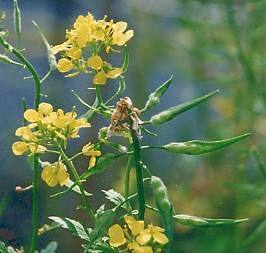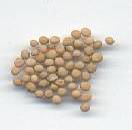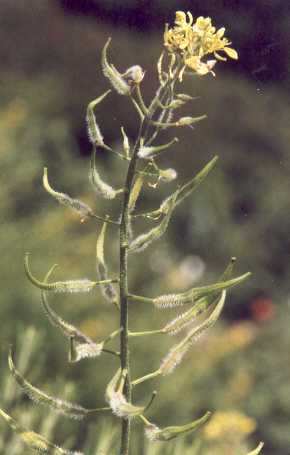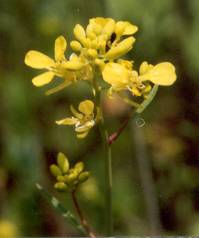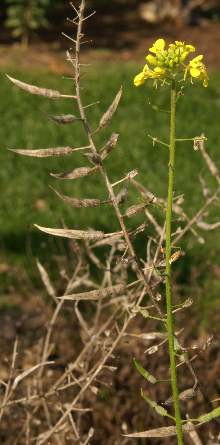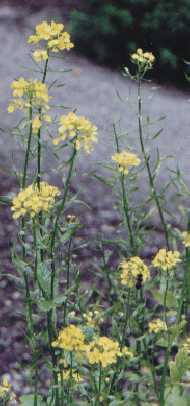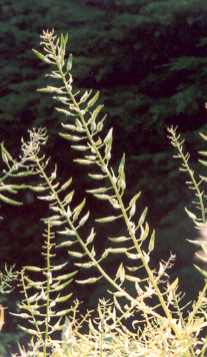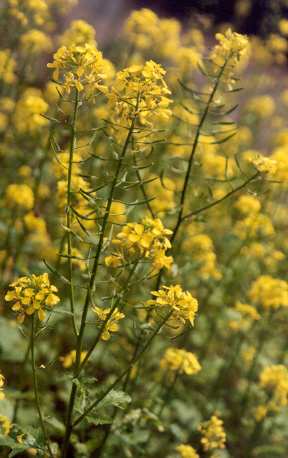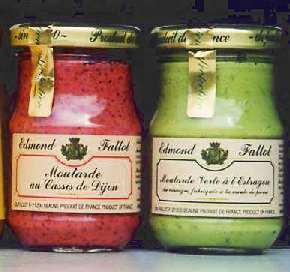| ||
|
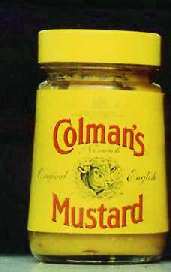
|
| Colman’s is the most popular and renowned type of mustard in Great Britain |
Mustard paste is a common condiment for boiled or broiled meat in Central and Northern Europe (and in the US); it also is often used for sauces. As mustard seeds contain emulgators, mustard does not only improve flavour, but also stability of emulgated sauces (e. g., sauce hollandaise, see tarragon). See borage for another example, Frankfurt Green Sauce.
Even today, the mustards produced in Britain, France and Germany have a distinct style. British mustard is mostly produced by the Colman method, which is there the dominant mustard technique since about 200 years. It uses black mustard, which is finely ground and sieved, together with small amounts of white mustard and wheat flour, which improves the texture. The mixture is traditionally sold dry, and mixed with water shortly before usage; the flavour develops within 10 minutes (see wasabi for an equal procedure in Japan). Obviously, this mustard contains no further ingredients besides water and mustard powder; it tastes pungent and hot, but very clear. Today, Colman mustard can also be bought already mixed.
In France, there are two different traditional types of mustard pastes. The pale Dijon mustard is made from decorticated seeds of black mustard, finely ground, that are mixed with sour grape juice (verjus) and salt. It is pungent, sour and quite salty, and fits very well to broiled or roasted meats. Dijon is the kind of mustard called for by the numerous recipes of sauces prepared in France. The milder Bordeaux type mustard, on the other hand, is made of white mustard seeds with their seed coats not removed, and is in fact darker than the Dijon type. It contains vinegar, sugar and numerous herbs and spices, for example tarragon. There are also less traditional mustard varieties in France that owe their particular flavour to additional ingredients like wine of Champagne or fiery Basque chiles.
Similarly, Germany can offer two main types of traditional mustard
pastes. Düsseldorf, Germany’s mustard capital,
produces a pungent mustard similar to Dijon
mustard (Löwensenf lion’s mustard
), which
is made from pure black mustard seeds.
The sweet mustard from Bavaria is prepared from coarsely ground white
mustard seeds, honey and various herbs; that’s the mustard to eat
with the typical Bavarian whitish sausages prepared from veal
(Weißwurst). Furthermore, a large number of
mild, smooth mustards is produced from ground white mustard seeds,
often flavoured with tarragon.
Usage of white mustard seeds as a spice is relatively minor, but the whole
seeds are popular in pickled vegetables; for this usage, they may be combined
with allspice and bay
leaves. The ground seeds are a popular spice in England, where they are
mixed with water and added to stews and sauces.
